SPS Zone Meeting
March 21, 2025 to March 22, 2025
Meeting host: By:Katia Roach
SPS Chapter:
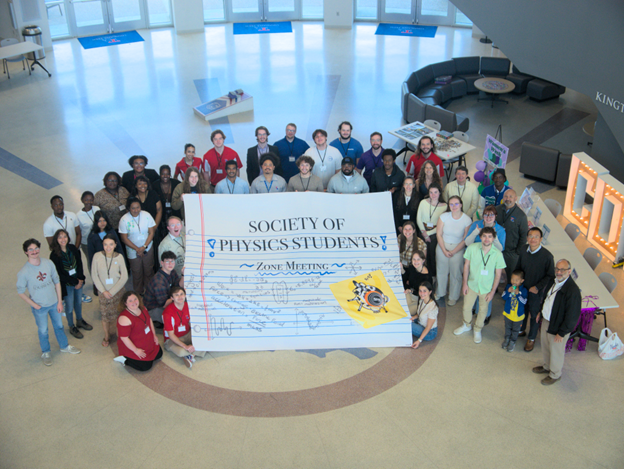
“Planning a zone meeting is going to be a lot of work…” states Laurel Larramendi, President of Louisiana Tech’s SPS Chapter, “...so we are going to have to start looking into it now.” Silence filled the table, all the officers looking at the president with confused faces. The Louisiana Tech’s SPS officers didn’t know how to even start, only Laurel had been to a zone meeting previously, and now they were hosting one. Questions swam through the air, where to start? How does this work? How long does it have to be? What are national’s recommendations? The list only got longer as the date grew closer and closer. Soon, it was March 21, the day before the big meeting, and everything was planned, placed, ordered, and ready for an amazing weekend.
Friday night kicked off with early registration and bowling at Lambright Sports and Wellness center, LATech’s recreation center. Thirty-nine attendees check in making a melting pot of conversation, from friendly bets on who's the better bowler to deep diving into a certain subtopic of physics. Professors from different universities got to mingle with other students, gaining insight to what other universities offer and how we are all different but at the same time, all the same through the passion of what we do as not just physics departments but as a community of academics and creatives. Some would think that the night ended at the bowling alley, but a gracious invitation was offered from LATech’s Astronomical Society to the other students to come visit the school's observatory and get a glimpse of the cosmos. Peeking through a telescope, the beauty of the universe was admired as stars were making their dance from their west to east moving positions. As the stars came and went, so did the time making the night peacefully come to a close, the first day of the zone meeting being a smooth success that was enjoyed by all.
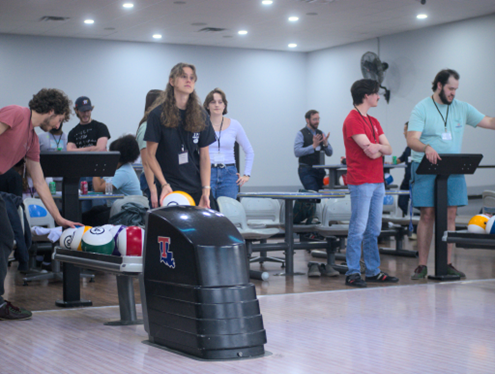
Day 2 was an early start, with the second round of registrations happening at 7:30 am with the rest of the participants joining us. The whole of LATech’s Integrated Science and Engineering Building (IESB) was prepped and booked for this event so the sole focus could be on having a good time.
The welcoming speeches were given by Louisiana Tech’s Academic Director for Chemistry and Physics,Dr. Lee Sawyer, Dr. Pedro Derosa, Program Chair for Physics and Professor for Physics and molecular science & nanotechnology, and Dr. Collin Wick who is the Dean of the College of Engineering and Science. All amazing picks with their amazing works in their research and involvement with the student body at Tech. Our university was also graced by Dr. Kelly Thayer, a professor from Wesleyan University who researches computational molecular biophysics. In her presentation, she talked about how her lab has recently developed two innovative techniques for studying protein signaling: Molecular Dynamics-based Markov State Models and Molecular Dynamics-based sector analysis, enhanced with machine learning/AI. “Allosteric regulation plays a crucial role in biomolecular function, yet capturing long-range signaling pathways remains a challenge in computational modeling. In this talk, I will discuss our recent advances in using generative artificial intelligence alongside molecular dynamics simulations to analyze electrostatic networks and their role in long-range allosteric signaling. Our approach focuses on new methods for computing interaction energies, enabling a more accurate representation of docking interactions while incorporating the energetic contributions of distant allosteric sites. These developments provide deeper insight into allosteric mechanisms and open new avenues for studying complex biomolecular interactions” She states about her presentation.
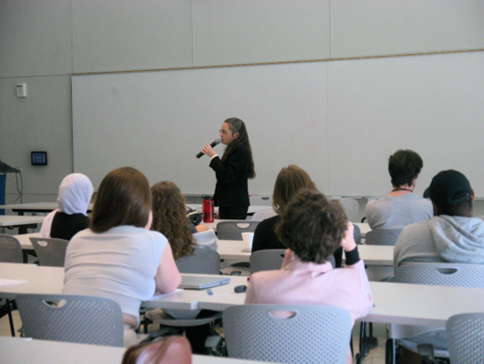
After the morning talks, it was time to tour the IESB, a great way to show other students what LATech[1] had to offer in their own physics departments. Tours started on the bottom floor, showing each room and what their purpose was, which labs held what equipment, and even some school memorabilia and the history behind it. Now this wasn't a regular tour of the IESB, it was a tour that led into a scavenger hunt! Each tour guide was given a list of areas to specifically point out and talk about, and when all the tours finished, the group of students were surprised with a list of clues, and were released to go find letters that spelled out “SPS Zone Ten”. Their incentive? Gift cards to different restaurants as the prize for whoever finishes first.
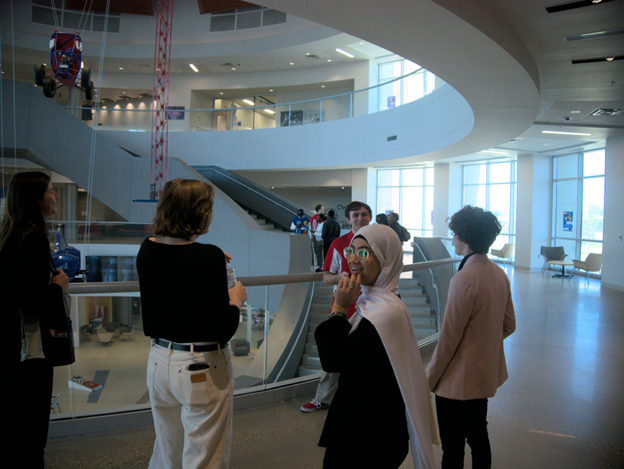
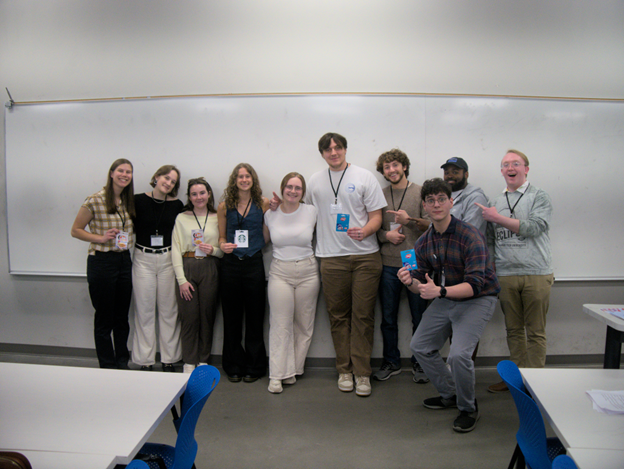
Lunch time rolled around after the morning festivities, with a presentation by Feng Chen, a civil engineer who works for LONI HPC as the manager of user services at Louisiana Tech University. They provide a high-speed fiber-optic network linking supercomputers at Louisiana's top universities.
The final event of the day, the career fair and poster presentations! Students from all other universities for Zone 10 got to present their research and talk to likeminded professors and students alike. Such as Ada Collins, a student at Rhodes college, whose poster was called “Characterizing AXOL1TL's Trigger Efficiency”. She states, “The Compact Muon Solenoid (CMS) detector at the Large Hadron Collider (LHC) captures a staggering 40 million proton-proton collisions every single second. The large volume of data cannot be stored on modern servers, necessitating a ‘trigger system’ to filter the data and eliminate 99.8% of captured events. One of these data-filtering algorithms is AXOL1TL, a novel neural network that is trained to flag events as anomalous. A consequence of AXOL1TL’s black-box design is that it is unknown how the algorithm is flagging events, just that it is doing so. Trigger efficiency, which represents the probability that an algorithm chooses to keep an event given a certain criteria, can be used to address this question. Preliminary trigger efficiency studies demonstrate AXOL1TL’s preference for high multiplicity events with low transverse momentum. Further work is necessary to refine the trigger efficiency calculation methods and continue mapping what AXOL1TL deems interesting enough to save.”
Other amazing posters were shown, such as Madison Bernice, a student at Louisiana Tech and the vice president of SPS in her chapter, who presented on “The CIA Mystery: Collision-Induced Absorption in Cool White Dwarfs”. When asked about her research she states, “Ultracool white dwarfs are conceivably the coolest and oldest white dwarfs in our Galaxy, and therefore are of paramount importance for white dwarf cosmochronology…Because current atmosphere models fail to accurately describe spectral energy distributions of ultracool white dwarfs, the very nature of these objects is still in question. Discrepancies between the temperatures and masses of ultracool white dwarfs insinuates a multi-billion-year disagreement on their presumed cooling ages.”
Wrapping up the poster presentations, it was time to say goodbye and enjoy the final remarks for this wonderful weekend. Excitingly Dr. Jeremy Lusk, professor at the University of Central Arkansas and our Zone 10 counselor, helped bring our meeting to a close. He informed us about Phys Con, how to raise money for it, scholarship opportunities, grants for our chapter of SPS, and personally my favorite, where the next zone meeting will take place. So, see you next year! Can’t wait to visit the University of Central Arkansas for another exciting weekend.
Dig deeper
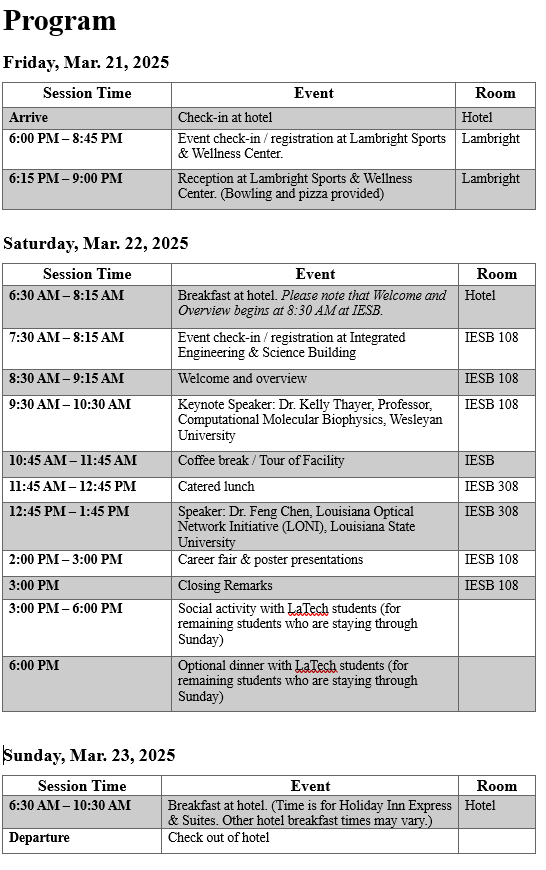
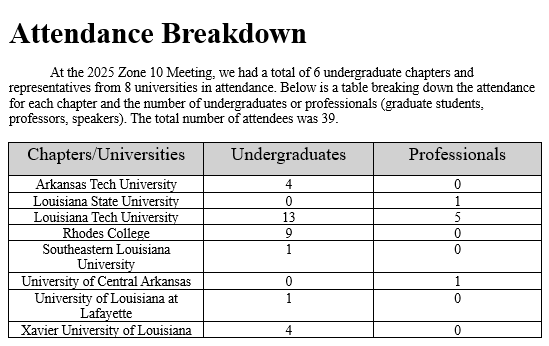
Future Zone Meeting Planning
When planning the Zone Ten meeting, we wanted to have a mix of professional events and fun/ less formal events. We kicked off the meeting with a social event Friday night at our bowling alley. This was a great way to let people mingle and get to know each other before the more formal part of the meeting started. We decided to put a twist on the usual tour of facilities by doing a scavenger hunt afterwards. This really energized people and got people to explore our facilities a lot more than a quick tour. We ended the Zone meeting with an optional discussion and dinner. The discussion was great as it allowed for undergrads to ask insightful questions to professionals on a more personal level. These are just some of the things that we did that received a lot of positive feedback.
Here are a few things we would strongly advise anyone that is planning a Zone 10 meeting. Planning things as early as possible is a must. Reach out to other chapters, speakers, and companies as soon as possible to increase that likelihood of attendance. It is never too early. Having a cut off date before the day the meeting starts help when preparing materials and keeping track of attendance. With plenty of notice people will have plenty of time to register, and the people planning the meeting will have plenty of time to plan accordingly. One thing to consider is having separate registrations for people participating in the entire meeting and people who are there just to present on their work or for a company. Since presenters are only there for a short period, they should not factor into the expenses of the meeting (such as food or room reservation fees). Lastly, start early on finding a way to contact other chapters about the meeting. They cannot register for the zone meeting if they do not know it is happening. Work with your Zone councilors on getting a list of contacts. If you are unsure if the contact is up to date, check the chapter’s social media and university website for a more up to date contact.
